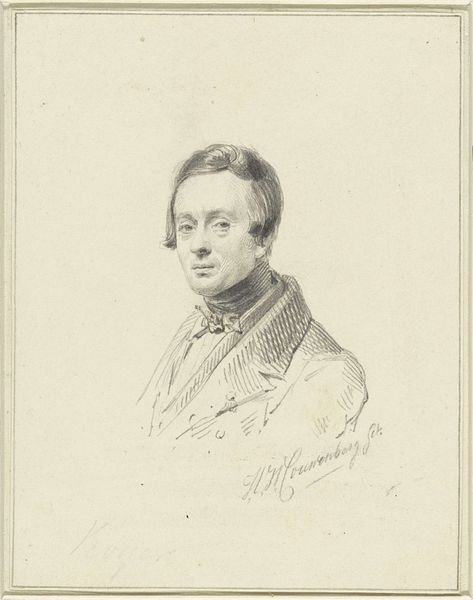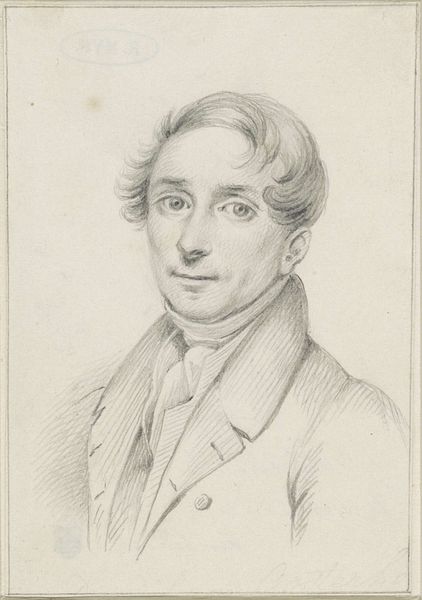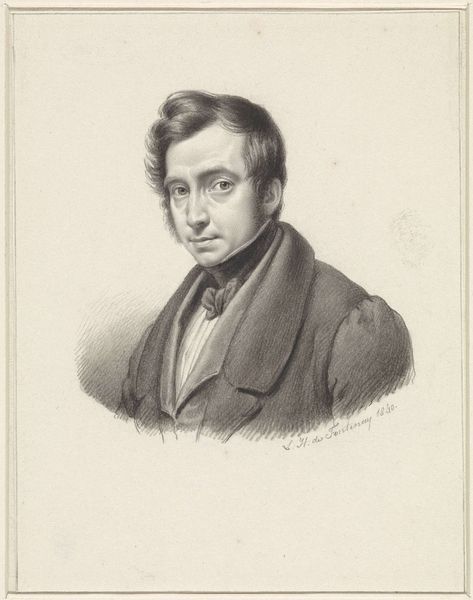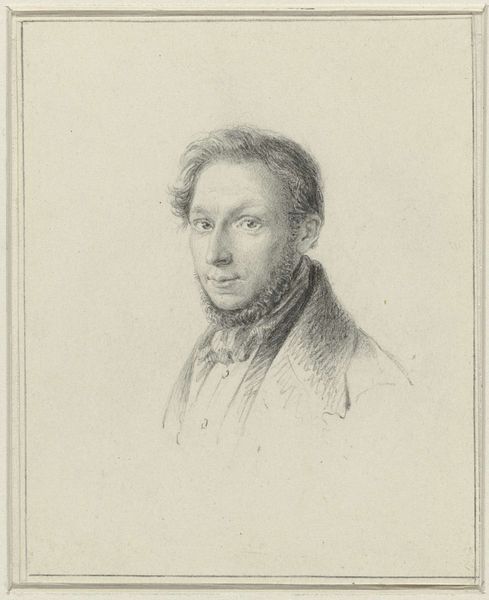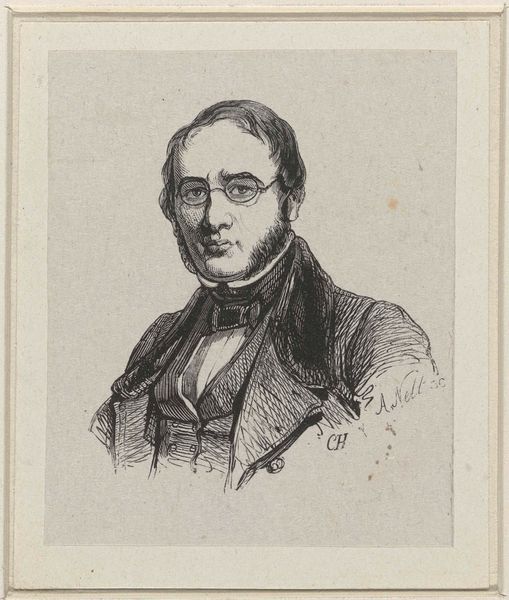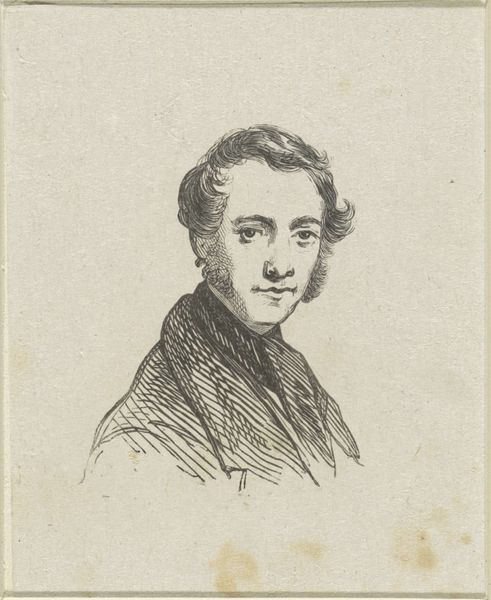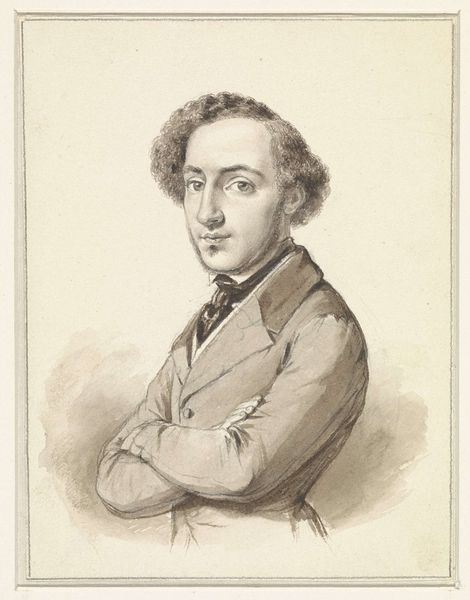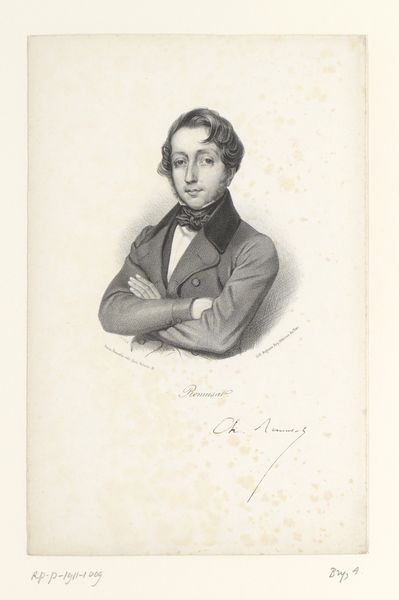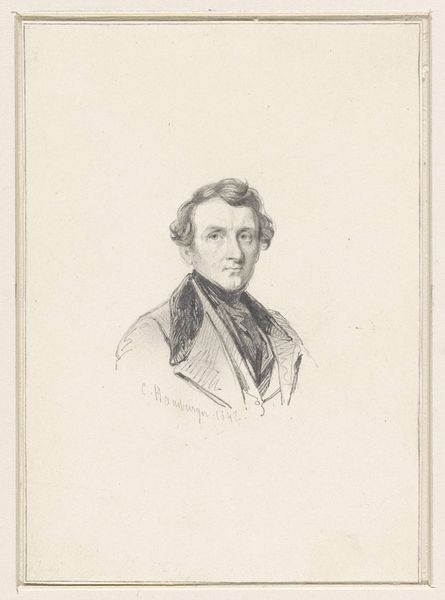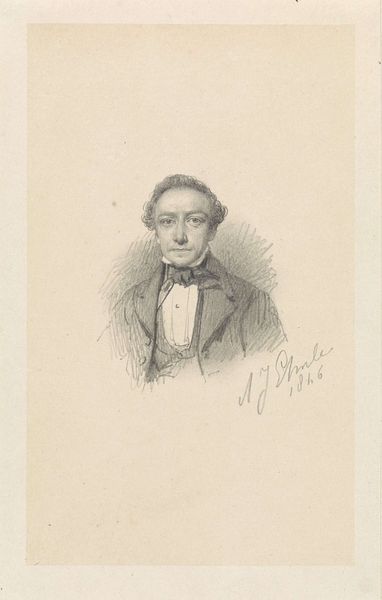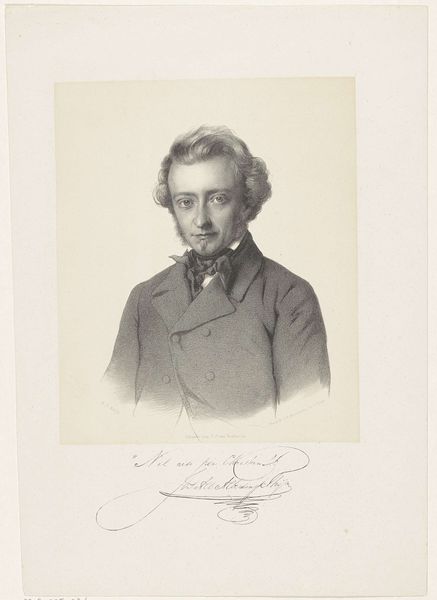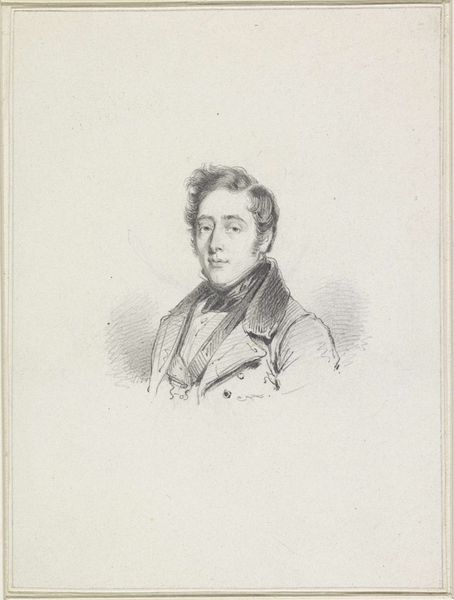
Zelfportret van Hendrikus van de Sande Bakhuyzen 1805 - 1860
0:00
0:00
hendrikusvandesandebakhuyzen
Rijksmuseum
drawing, pencil
#
portrait
#
pencil drawn
#
drawing
#
pencil sketch
#
pencil drawing
#
romanticism
#
pencil
#
portrait drawing
#
realism
Dimensions: height 171 mm, width 128 mm
Copyright: Rijks Museum: Open Domain
Editor: So this is Hendrikus van de Sande Bakhuyzen's self-portrait, dated sometime between 1805 and 1860. It's a pencil drawing, quite delicate. What do you find most striking about it? Curator: For me, it's about understanding how Romanticism, a dominant movement then, shaped artistic self-representation. The piercing gaze, the slight dishevelment… How does this resonate with the Romantic ideal of the artist as a passionate, perhaps tormented, genius? Editor: That makes sense. I see the sensitivity in his expression now. Do you think this image reflects how artists wanted to be seen by the public back then? Curator: Absolutely. Consider the burgeoning art market. Artists were crafting a persona, a brand if you will, to appeal to potential patrons and establish themselves within artistic circles. The Rijksmuseum exhibiting this piece reinforces that idea of canonizing certain artistic identities. To what extent can we even see portraiture as an artistic product made to promote the social status of the person? Editor: Wow, I hadn't considered the branding aspect! So it's not just about self-expression, but about actively shaping a public image? Curator: Precisely. The choice of pencil, a readily available medium, also speaks to accessibility and perhaps even a democratization of art making, while subtly reinforcing this artistic identity in his era. The self-portrait gains in cultural capital as a social representation in that time. How is his social image linked to Romantic ideas of what an artist should look like? Editor: This makes me realize there's so much more to a seemingly simple drawing than just a face. Curator: Indeed. It reveals complex intersections of art, commerce, and identity in 19th-century Dutch society. Editor: I'll definitely look at art differently now, thinking about the social context it was created in. Curator: And how its presence here, in the Rijksmuseum, continues to shape that context!
Comments
No comments
Be the first to comment and join the conversation on the ultimate creative platform.
